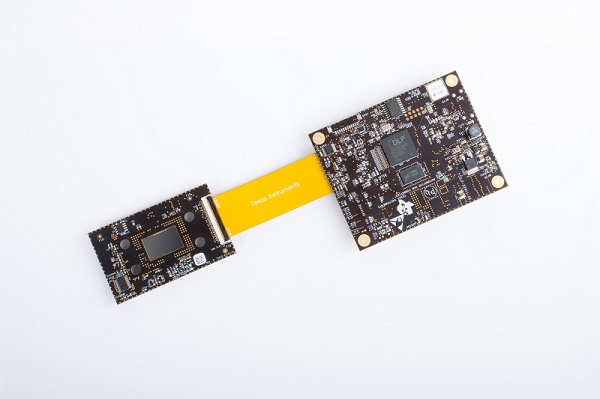New automotive-qualified DLP3030-Q1 chipset and EVMs allow automakers and Tier-1 suppliers to create HUD systems with crisp, high-quality imagery
Texas Instruments (TI) (NASDAQ: TXN) today unveiled the next evolution of DLP® technology for in-vehicle head-up display (HUD) systems. The new DLP3030-Q1 chipset, along with supporting evaluation modules (EVMs), gives automakers and Tier-1 suppliers the ability to bring bright, dynamic augmented reality (AR) displays to windshields and place critical information within the driver’s line of sight.
Designers can take advantage of the automotive-qualified DLP3030-Q1 chipset to develop AR HUD systems that project virtual image distances (VIDs) of 7.5 meters and greater. This is made possible by the unique architecture of DLP technology that enables HUD systems to withstand the intense solar loads created when projecting long VIDs. The combination of increased VIDs and ability to showcase imagery across a wide field of view (FOV) gives designers the flexibility to create AR HUD systems with enhanced picture depth for an interactive, not distractive infotainment and cluster system. For more information about the DLP3030-Q1 chipset, see www.ti.com/DLP3030Q1-pr-eu.
Key features and benefits of the DLP3030-Q1 chipset
- Decreased package size: Ceramic pin grid array package (CPGA) reduces the digital micromirror device (DMD) footprint by 65 percent, enabling smaller picture generation unit (PGU) designs.
- Increased operating temperature: Operates between -40 and 105 degrees Celsius and delivers 15,000 cd/m2 brightness with the full color gamut (125 percent National Television System Committee [NTSC]), enabling clear image visibility regardless of temperature or polarization.
- Designed and optimized for AR: Easily manages the solar load resulting from longer VIDs greater than 7.5 meters, while supporting large displays up to 12 by 5 degrees FOV.
- Works with any light source: Supports HUD designs that use traditional LEDs as well as laser-based projections for holographic film and waveguide-enabled HUDs.
Tools and support
Automakers and Tier-1 suppliers can easily evaluate, design and productize HUD systems regardless of where they are in the design cycle with one of three new EVMs featuring the DLP3030-Q1 chipset.
- The DLP3030-Q1 Electronics EVM allows developers and Tier-1 suppliers to create their own custom PGUs for HUD systems.
- The DLP3030-Q1 PGU EVM gives designers the tool they need to develop new HUDs based on DLP technology or benchmark DLP technology performance in existing HUD designs.
- The DLP3030-Q1 Combiner HUD EVM enables automakers and Tier-1 suppliers to evaluate full system performance using DLP technology in one easy-to-use tabletop demonstration.
Package, pricing and availability
The DLP3030-Q1 chipset, offered in a 32-mm by 22-mm CPGA package, is now available for sampling upon request. The EVMs are available for purchase on TI.com and are priced as follows: DLP3030-Q1 Electronics EVM (DLP3030Q1EVM) US$1,999; DLP3030-Q1 PGU EVM (DLP3030PGUQ1EVM) US$6,500; DLP3030-Q1 Combiner HUD EVM (DLP3030CHUDQ1EVM) US$25,000. Technical documentation is available upon request.
Learn more about DLP technology for automotive displays
- Learn more about the DLP3030-Q1 chipset
- Find out which EVM is right for you
- Read TI’s white paper on HUD technology
- Learn more about HUD systems
- Watch our videos on the DLP3030-Q1 chipset and associated EVMs



















